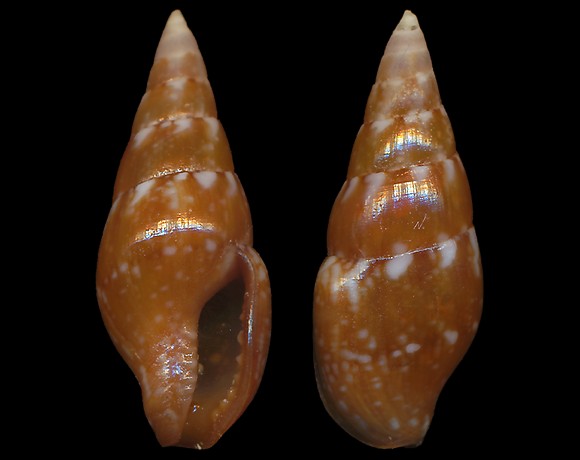
Predator in the infralittoral (under stones, or among the Posidonia rhizome layer) and in the circalittoral. Synonym: lanceolata. – At low tide on algae, Jerba, Gulf of Gabes, S. Tunisia. 14mm.
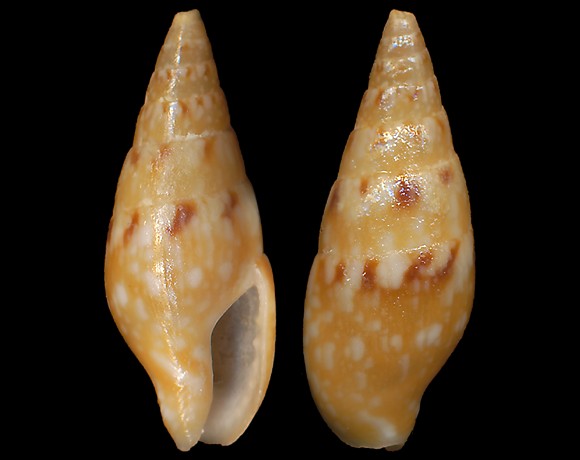
The species differs from scripta by the flatter whorls and by a subsutural band adorned with an alternance of dark and pale blotches. Pale monochromatic specimens do exist also.
A specimen from NE. Malta.
Under rock in shallow water, Grand harbour, Valletta. 12,5mm.
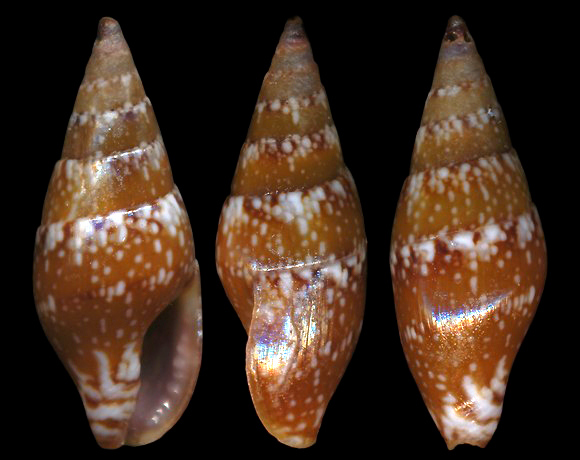
On rocks, 5m deep, southern shore of Spinalonga, 800m east of Elounda channel, NW. of Kolpos Mirabellou, Lasithi, N. Crete. 13mm.
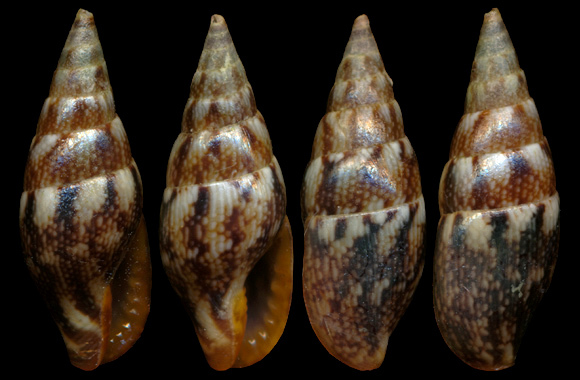
3m deep, under stone near offshore reef, Vai bay, Itanos, NE. of Palaikastro, Sitia, E. Crete. 13-14mm.
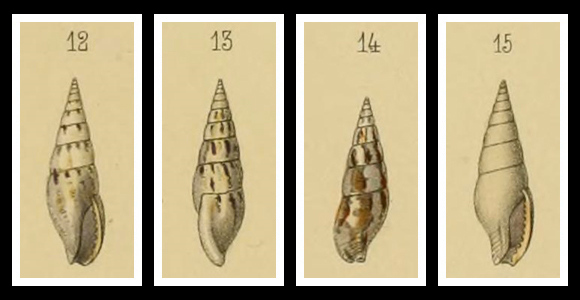
« This form, kindly given to me by the Marchese of Monterosato in about half a dozen specimens for illustration, follows on the whole from the typical Mitrella scripta, but on closer comparison reveals not inconsiderable differences. Much larger and noticeably slimmer, it has nine to ten whorls, while Mitrella scripta rarely has more than seven. The whorls are flatter and more or less markedly hollowed out under the suture, and the last whorl, seen from the back, measures barely more than two-fifths of the shell. » – Op. cit. p.38.
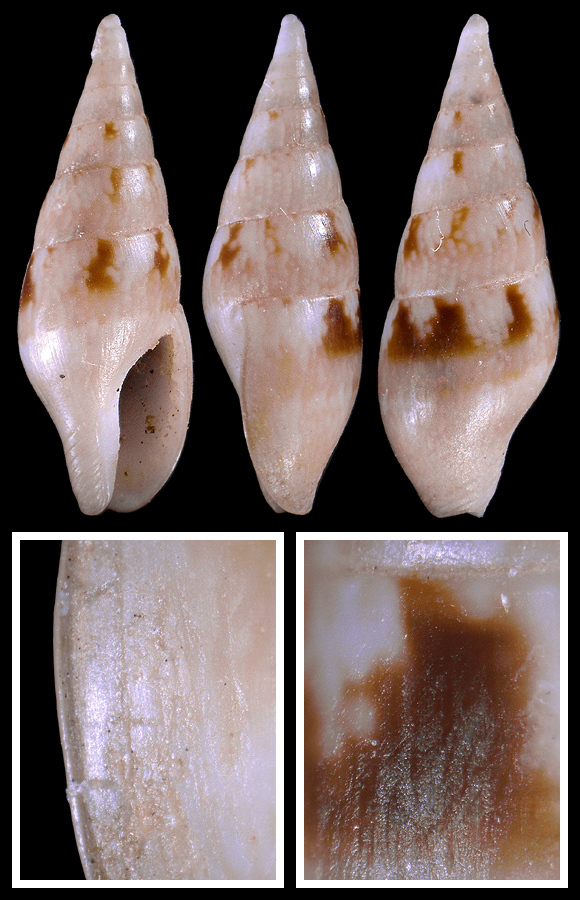
« The pattern also differs somewhat; in none of the present pieces is the background monochromatic white, rather there are countless fine brownish grid lines on a pale yellow layer; the chestnut-brown markings are sometimes limited to a series of sutural blotches, sometimes forming pronounced welts and flames; it is seldom entirely absent.
» – Ibid.
50m deep, Poetto, Cagliari, S. Sardinia. 13,7mm.
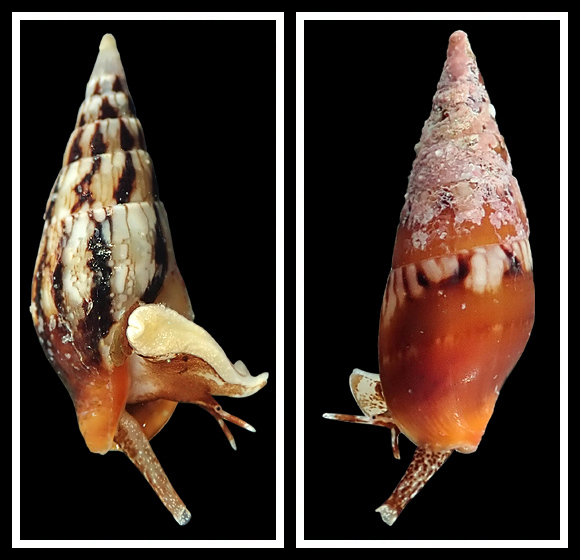
– (CC BY-NC-SA) –